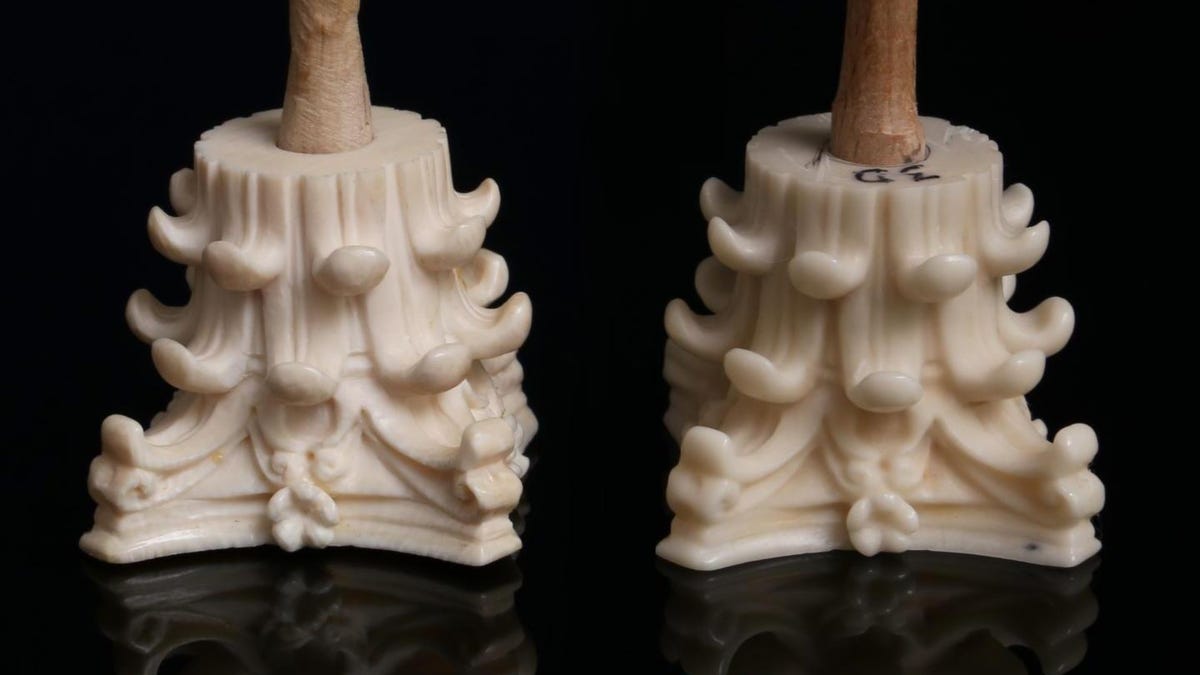3D-printed, elephant-friendly ivory substitute Digory looks like the real thing
Historic objects and furniture could be seamlessly restored with a high-tech artificial ivory.
The elephant ivory trade has been widely banned across the globe in an effort to protect the declining populations of the majestic animals. A team of researchers has come up with a new a synthetic ivory that can be used to repair or restore historic objects, from missing chess pieces to a 17th-century casket.
"Digory" is made of synthetic resin and calcium phosphate particles. "It is processed in a hot, liquid state and hardened in the 3D printer with UV rays, exactly in the desired shape," said the Vienna University of Technology (TU Wien) in a statement on Tuesday. "It can then be polished and color-matched to create a deceptively authentic-looking ivory substitute."
Restoration experts have turned to plastic, bone and other substitutes to replace ivory, but it has been challenging to find materials that look, feel and behave like the real thing. "The material should not only look like ivory, the strength and stiffness must also be right, and the material should be machinable," said TU Wien's Thaddaa Rath, lead author of a paper on Digory published in the journal Applied Materials Today.
The Digory ivory substitute can be stained and decorated with dark lines to look like real ivory.
The research team developed Digory to help restore a 17th-century casket that was missing elaborate ornamental ivory pieces. The 3D printing method allowed them to replicate the intricate design of the originals.
It took a series of experiments to hit on the right formula for the synthetic ivory, which has a translucent character that mimics the natural material. It also has a similar density and color. The researchers had good luck with using black tea to stain the Digory to match older ivory.
The world's population of elephants has been devastated in part by illegal poaching for their tusks. Various bans on the ivory trade have been enacted, with the US notably implementing a near-total ban on the commercial trade in African elephant ivory in 2016.
The researchers hope Digory will help restore historic art and religious objects in a quick, convenient and ethical way.


